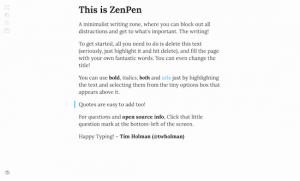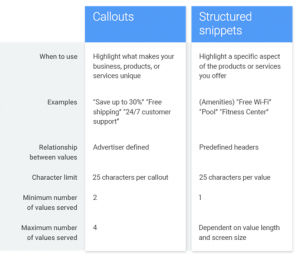Since the pandemic began, the U.S. labor market has seen no shortage of twists and turns—from record-breaking job losses to the Great Resignation. And as 2022 comes to a close, workers are facing an uncertain year yet again.
According to a recent survey of 1,300 CEOs by KPMG, more than half of U.S. CEOs are considering layoffs in anticipation of a 2023 recession. And Barclays, Citigroup, Meta, Twitter, and Salesforce are just a few of the organizations that have cut jobs this month.
But despite foreboding research and high-profile layoffs, some suggest that the labor market is, and will remain, remarkably resilient in the new year.
This is the first prediction of Glassdoor and Indeed’s Hiring and Workplace Trends report. Researchers surveyed thousands of workers and consulted with economists to determine what turns are in store for workers in the year ahead. Here are the five biggest trends they predict:
1. A tight labor market
Despite concerning job cuts at high-profile tech companies, the report suggests that workers will have the upper hand in the labor market next year.
“As a result of recent news about layoffs and hiring freezes, it seems natural that the unemployment rate will increase over the next few months—coming off historic lows,” explains Aaron Terrazas, chief economist at Glassdoor. “As big as they may feel, it’s important to keep in mind that recent layoff announcements—which total in the tens of thousands—are a tiny fraction of the 160 million jobs nationwide.”
Terrazas and his team suggest that even a recession will not significantly impact the labor market because the working-age population continues to fall in countries like Canada, China, France, Germany, the United Kingdom, and the United States. This limited supply of workers is expected to keep employers hungry for talent and to limit dramatic spikes in unemployment.
“Economies of many countries could slow or even fall into recession as central banks work to lower inflation. But even if employers’ hiring appetites fade, the supply of workers seems likely to remain tight in the long run,” reads the report, citing falling shares of workers between the ages of 25 and 54. “Despite looming talks of recessions, Indeed and Glassdoor economists believe that hiring will remain challenging for years to come, driven by demographics and evolving preferences. Workers will continue to have the leverage to press for higher pay, stronger benefits, scheduling flexibility, and a variety of other perquisites.”

2. Remote work is here to stay
One of the most popular policies that workers will use their leverage for will be the option to work remotely, according to the report, which found that workers are consistently interested in remote work.
“We haven’t yet cracked the code on remote work. But, I think it’s safe to say that the cat is out of the bag, and remote work works!” says Svenja Gudell, chief economist at Indeed. “Remote work might also not be the right fit for every company and every employee, so there will naturally be some self-selection that will happen.”
On Indeed, 8.6% of U.S. job postings mention remote work (up from 2.9% before the pandemic) and 9.8% of workers’ job searches mention remote work (up from 1.7%).
“Glassdoor data shows that remote roles consistently generate more interest from job seekers, and organizations that offer fully remote options naturally have access to a much deeper talent pool,” adds Terrazas.
3. Boosted benefits
Both of the job sites found that employers are increasing their benefits, and advertising them, in order to attract talent.
“In the U.S., these benefits provide employers ways to differentiate their organizations and sweeten job offers, especially in occupations at the lower end of the wage scale that typically require in-person attendance, like childcare or food preparation and service,” reads the report.
Researchers found that between 2019 and 2022, the percentage of low-wage sectors offering paid time off as a benefit increased significantly from 17% to 34%.
And employers are also increasingly offering mental health benefits. In 2022, 63% of benefit reviews on Glassdoor mentioned “mental health care,” up from 49% in 2019.
4. Happiness as a measure of success
The report suggests that workers prioritize their happiness and well-being more than they did before the pandemic. Nearly half of workers surveyed said that their expectation around happiness at work has increased in the last year, and 86% of those surveyed say that how they feel at work impacts how they feel at home.
What’s more, Glassdoor and Indeed estimate that 90% of people believe that how we feel at work matters, but only 49% of people report their company is measuring happiness and well-being.
In this way, “measuring and understanding employee well-being is becoming vital to attracting and retaining talent.”
5. An emphasis on DEI—for some
The final workplace and hiring trend that Glassdoor and Indeed predict for 2023 is an increased emphasis on diversity, equity, and inclusion (DEI). But this enthusiasm is not evenly distributed among workers.
Researchers found a significant generational divide when it came to attitudes toward DEI initiatives. While 72% of workers ages 18 to 34 said they would consider turning down a job offer or leaving a company if they did not think that their manager (or potential manager) supported DEI initiatives, that attitude changes with each older age group: just 63% of those ages 35 to 44, 60% of those ages 45 to 54, 52% of those ages 55 to 64, and 45% of those over the age of 65 said the same.
DEI expert Jourdan Saunders, says she is not surprised by this generational gap.
“Younger age groups are more passionate about DEI initiatives,” says Jourdan, founder and CEO of The Resource Key, which focuses on inclusive branding. “And ultimately, businesses have a responsibility now more than ever to invest in those initiatives.”
(24)







